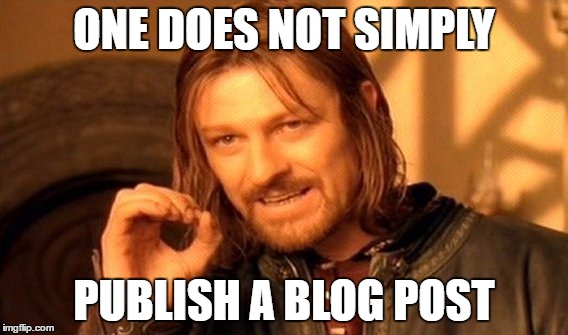
When it comes to a content strategy, music and streaming websites and apps we can all be guilty of thinking "What's that got to do with business?" Our SEO Exec Rob Goodison believes there's more than a better commute to be gained from sources like Spotify. Find out why with his insights below.
As a huge music fan i spend a ridiculous amount of time on Spotify (a quick check of my year in music puts me at 43,000 minutes of listening in 2015, that’s 30 days of consecutive, non-stop music!).
This led me to the question ‘if I’m this engaged when it comes to music, surely there are other people who are just as, if not more, engaged than I am?’. This then led me to another question ‘Can Spotify be used as part of a successful content strategy?’
As Canadian as Rock n’ Roll and Coca Cola
One of the first brands that appeared to be taking full advantage of Spotify’s potential as a marketing tool is Coca Cola, who recently launched their Play a Coke campaign in Canada. The Play a Coke campaign (a twist on the wildly successful ‘Share a Coke’ campaign) allows users to unlock playlists through their own ‘Play a Coke’ app. Coca Cola have had a long history with music being a central part of their content strategy, and this seems unlikely to change in the face of new technological trends (such is the power of music).

Although this level of commitment requires significant investment, smaller brands and businesses can take a few ideas from the Coca Cola playbook and still use Spotify successfully as a part of their content strategy (at a fraction of the cost).
So who uses Spotify?
According to research conducted by comScore, the music streaming audience is “twice as likely as non-streamers to advocate for and feel emotionally connected to brands”. The study also found a number of key observations:
- 74% more likely to listen via smartphone
- More than 3x as likely to listen while shopping or travelling
- 2x as likely to listen at work or school and while exercising
- 5x as likely to watch TV and movies online daily
So what’s the takeaway from these statistics?
Well first of all, we can see users are more likely to be on the move or engaged in some form of social activity, and they’re overwhelmingly mobile users. This gives us a starting point for our Spotify content strategy.
Getting Started on a Content Strategy
So aspiring playlist creator, where to start?
As an SEO/PPC guy first, my usual point of call is to pull up keyword planner to search for ideas and in this instance I see no reason to break tradition!
After some searching, I find a gem of a keyword in ‘wedding playlist’.
‘Perfect!’ I say. There’s tons of brands which could find an audience by creating a wedding playlist, and what better way to make a personal connection with our target audience than to soundtrack the greatest night of their lives?!

Planning the campaign
For the purposes of this post, we’re going to start a business (let’s call it Bob’s Wedding Bazaar). Bob’s struggling to attract new customers through traditional advertising and wants to try something different. Bob decides the best way to do this is to create a blog post based around the keyword ‘wedding playlist’ as a way of generating traffic and potential new customers for his business. Bob decides the blog post must do a few key things:
- Sign people up to the mailing list (in exchange for access to the playlist)
- Increase the search visibility of the site (the number of ranking keywords and their search ranking)
- Generate awareness of the Bob’s Wedding Bazaar brand (through increased traffic levels)
Bob writes a content piece entitled ‘The 10 greatest songs that need to be on your wedding playlist’ and includes a call to action which states ‘Get these songs (and more!) on our Spotify playlist’ dotted throughout the piece. When people click this call-to-action, users are asked to submit their name and email address in exchange for the playlist. Bob accepts some users will go straight to Spotify to find the playlist, but he knows his audience well enough to know the majority will fill in the form to gain access.
This will help Bob to increase the size of his mailing list and offer services and products to his subscribers.
Reach out! I’ll be there….
In order for Bob to rank in the search results for his target keyword (wedding playlist), he needs to reach out to other site owners which cover similar content to his own site. Luckily for Bob, a quick search for ‘wedding blogs’ brings up 36,400,000 results! This gives Bob a lot of opportunities to gain some useful links back to his site (which will improve his overall search visibility). The goal of any outreach campaign is to build a relationship with the person you’re contacting (as opposed to just asking for a link).
In Bob’s case, he has the perfect reason to contact these wedding experts, the playlist!
Bob decides the best way to start a conversation with these people is to ask them to contribute a song to the wedding playlist itself. These micro-contributions often prove invaluable for a blog post’s search visibility as there’s a high chance the contributor will be organically link to the blog post itself. Bob is careful to craft a personalised email along the lines of:
“Hi Weddingblogger
I just finished reading your article on ‘101 wedding gifts to buy for newlyweds’.
Absolutely amazing! Really enjoyed it.
I run a blog called Bob’s Wedding Bazaar which covers various wedding topics. We’re putting together the ultimate wedding playlist and I wondered if you wanted to contribute a suggestion?
All you have to do is pick a floorfiller and tell us why you love it!
Thanks
Bob”
This approach helps to differentiate yourself from the competition (most popular bloggers are hounded daily with link requests, so making sure you stand out from the crowd is essential).
With luck and some perseverance, we’ll receive a response from someone who’s happy to contribute their favourite songs to the playlist (he could even include some of the responses he received from his blogger outreach campaign in the content itself).
Once Bob has his content and the playlist finished, he’s ready to hit publish.
So, job done and time for Bob to head to the pub right?
Wrong!

Many brands put a lot of (worthwhile, it should be said) time and attention into creating their content but neglect the important next step of actually promoting the content across the appropriate marketing channels. This can lead a very negative spiral that can harm not just a content strategy but the whole website, the spiral often goes like this:
Content is decided upon > Content is created & published > Content receives no traffic > Organisation decides content isn’t worth creating
This story is unfortunately all too common for brands, and speaks volumes about the level of misunderstanding surrounding content marketing.
So what’s the solution?
Step 1) Link Building
Link building has become something of a dark art in recent years as Google cracks down on spammy practices, but the principal is still essentially the same. A backlink is like a vote for a site, but some votes are worth more than others. In this unequal democracy, sites that are deemed useful and authoritative appear higher in the rankings for user queries.
Going back to the earlier example of Bob’s Wedding Bazaar, Bob took the wise move of reaching out to bloggers in an effort to build his playlist. Now the blog post has been published, Bob should reach out to the contributors with the news that the post is now live and ask for the person to share it with their visitors & followers.
Bob could also take a look at the sites that rank for his chosen keyword (wedding playlist) and find out who is linking to the pages that already rank using a tool like Moz’s Open Site Explorer.
Step 2) Social Media
Since Spotify is so integrated with social media, promoting your content on the relevant channels is a no-brainer. In the case of Bob, Facebook is the most obvious platform to find an audience and reach potential customers.
This approach generally works best when a brand ‘spikes’ its content with paid advertising. The concept of spiking is something we intend to cover in more detail in a future post, but what it basically means is that when you publish content, you use a short-term paid advertising campaign to promote the content to a wider audience (creating a spike in traffic).
Facebook’s demographic targeting is the perfect fit for this approach, as it allows advertisers to target selected audiences (in the case of Bob, we can target people who have mentioned topics relating to wedding planning, engagements and other related topics).
Step 3) Refer a friend
Often the easiest way to gain a customer is to get a current customer to refer your content to a friend in exchange for an incentive. There are many ways to do this but the easiest by far is to push your content to your current email subscribers with an incentive. To use Bob as an example again, he could send a link to the content in his monthly newsletter and offer people free store credit or a discount code in exchange for having a friend subscribe to the mailing list.
By following these steps, Bob is likely to have gained some really relevant traffic, increased the size of his mailing list and had a few enquires for his products and services.

Bonus Round: Spotify advertising
An interesting and often overlooked tool available to advertisers is Spotify’s paid advertising tool. I know from personal experience that Spotify’s advertising can sometimes be misplaced (a Britney Spears perfume advert in the middle of The Queen is Dead? Madness!). I’d be interested to hear from anyone who’s had experience with this tool and what kind of return they received as a result.
Have you found successes with unconventional media for your content strategy? Tweet us your success stories @photolink